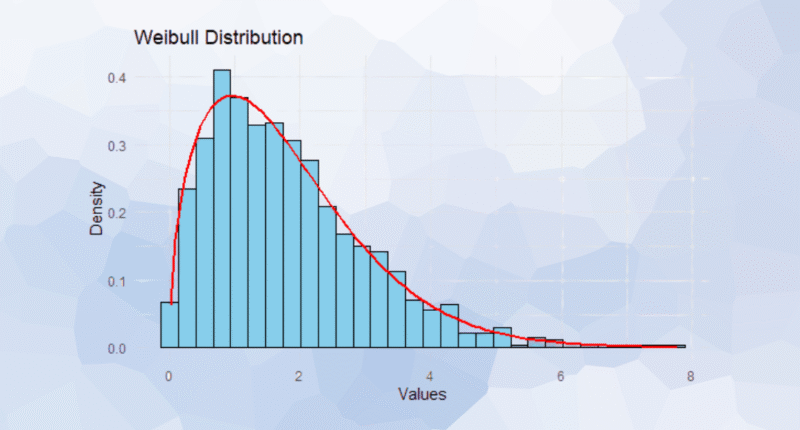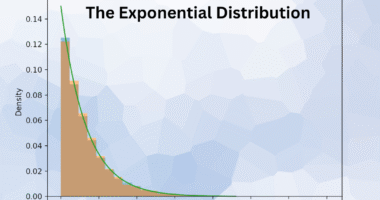The Weibull Distribution is one of the most widely used continuous probability distributions in reliability engineering and life data analysis. Its strength lies in its flexibility — it can represent a wide variety of data patterns, from early-life failures to wear-out failures. Because of this, it is often referred to as the “universal distribution” for modeling product lifetimes and system reliability.
What Is the Weibull Distribution?
The Weibull Distribution is a continuous probability model used to describe the time until failure of a product, component, or system. It can take on many shapes, depending on the type of process or material being studied. This flexibility allows it to represent different failure behaviors, such as:
- Infant mortality (early failures)
- Constant failure rates
- Wear-out failures (increasing failure rates over time)
In essence, the Weibull Distribution helps describe how long something will last and how likely it is to fail at different stages of its lifecycle.
Why the Weibull Distribution Is Important
The Weibull Distribution is central to reliability engineering, maintenance planning, and quality improvement because it can accurately describe different life characteristics of products and systems. Its versatility allows engineers to:
- Identify whether failures occur early, randomly, or due to aging.
- Estimate mean time to failure (MTTF) and reliability over time.
- Design maintenance schedules and predict service life.
Unlike the exponential or normal distributions, the Weibull model can adjust to different shapes of failure data, making it suitable for nearly any industry.
Real-Life Example: Product Lifetime in Electronics
Consider a manufacturer testing a new batch of LED bulbs. Some bulbs fail quickly due to manufacturing defects (early failures), while most function normally for thousands of hours before gradually burning out (wear-out failures).
The Weibull Distribution helps model these failure patterns and determine:
- How long most bulbs are expected to last.
- The point at which failures begin to increase sharply.
- Whether design improvements or process changes are needed.
By using Weibull analysis, the company can predict product reliability, optimize warranty periods, and reduce production costs through better design decisions.
Applications Across Industries
The Weibull Distribution has broad applications, including:
- Manufacturing: Estimating product lifetimes and optimizing maintenance schedules.
- Aerospace and Automotive: Predicting component failures and fatigue life.
- Healthcare: Modeling survival times of patients or medical devices.
- Energy Sector: Assessing the reliability of wind turbines, engines, or power systems.
Its adaptability to various shapes and patterns makes it indispensable for engineers, data analysts, and risk managers.
Conclusion
The Weibull Distribution is a cornerstone of reliability analysis and continuous probability modeling. Its flexibility to represent different failure behaviors makes it ideal for understanding and improving product life cycles. Whether predicting equipment reliability, analyzing defects, or setting maintenance intervals, the Weibull model provides powerful insights that help organizations make data-driven decisions to enhance performance and safety.









